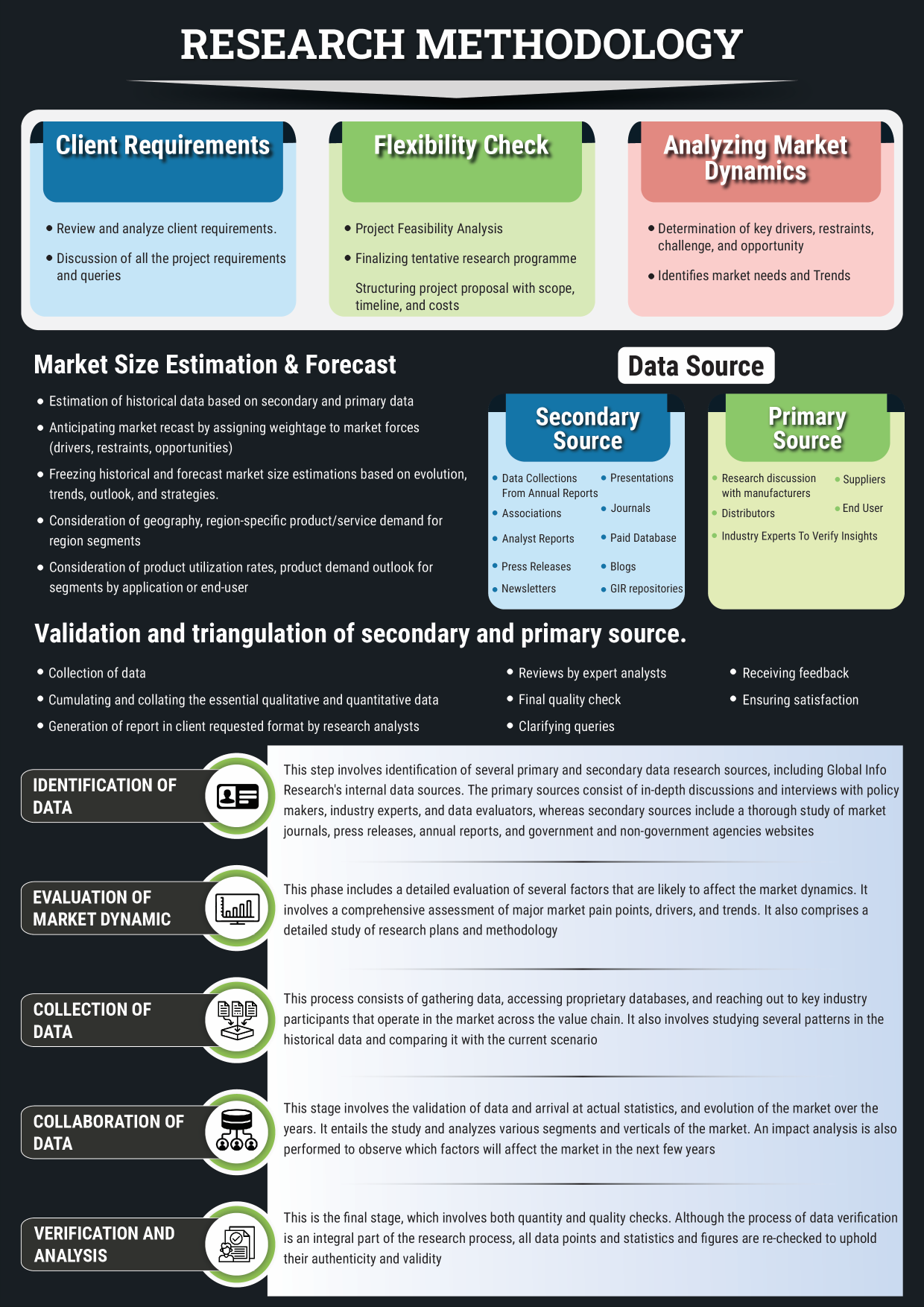Cell Culture Market 2025: Strategic Insights, Growth Drivers, and Emerging Trends
The cell culture market is entering a period of accelerated evolution as we move into 2025. Once viewed as a foundational lab technique, cell culture is now a critical enabler of modern biopharmaceuticals, regenerative medicine, precision diagnostics, and synthetic biology. Fueled by increasing demand for biologics, rapid advancements in culture technology, and a shift toward personalized medicine, the market is expanding both in complexity and opportunity.
For healthcare market research professionals and industry stakeholders, understanding the dynamics shaping the cell culture market in 2025 is key to identifying high-value growth opportunities and navigating the competitive landscape. This article presents a comprehensive, research-driven view of the market, including its key drivers, innovation pathways, regional shifts, and strategic imperatives.
Market Drivers: The Engines of Growth
Several high-impact factors are propelling the global cell culture market forward. These drivers are not isolated; they are interconnected forces shaping demand and innovation simultaneously.
- Rising Demand for Biopharmaceuticals
The global push for advanced therapeutics such as monoclonal antibodies, cell and gene therapies, and mRNA-based vaccines has made robust, scalable cell culture systems a necessity. Biopharmaceutical companies are increasingly investing in media optimization, culture scalability, and contamination-resistant bioreactors to support pipeline expansion. - Transition to Defined, Animal-Free Media
The market is witnessing a major transition from serum-based systems to chemically defined, serum-free, and animal-origin-free culture media. This shift addresses regulatory expectations for consistency and safety while also aligning with ethical and sustainable practices. - 3D Cultures and Organoid Models
Researchers are moving beyond traditional 2D cultures to adopt three-dimensional (3D) systems that more accurately mimic the architecture of human tissues. These advanced platforms improve preclinical drug testing and reduce translational gaps between lab and clinic. - Personalized Medicine and Small-Batch Manufacturing
With growing interest in customized therapies—particularly in oncology and rare diseases—cell culture systems must now accommodate high-variability, low-volume production runs. This has increased demand for modular, closed-loop culture platforms.
Technological Innovation: Reshaping the Future of Cell Culture
The 2025 cell culture landscape is defined by technology-driven disruption. From digital tools to sustainable manufacturing, innovation is unfolding across every facet of the ecosystem.
- Automation and Robotics Integration
Advanced robotic systems are transforming cell culture labs by reducing manual errors, standardizing processes, and scaling up high-throughput operations. These systems also facilitate rapid media exchanges and real-time monitoring with minimal human contact. - AI-Enabled Culture Optimization
Machine learning algorithms are being deployed to analyze culture viability, optimize growth conditions, and predict outcomes based on historical data. These tools enable proactive troubleshooting and reduce time-to-discovery for R&D teams. - Single-Use Bioreactors and Disposable Systems
The increased adoption of single-use technologies (SUTs) is streamlining production and minimizing contamination risks. These systems offer flexibility in multi-product facilities, helping companies manage costs and scale efficiently. - Customized Culture Media
As therapies become more cell-type specific, there is rising demand for tailor-made culture media designed to meet the unique metabolic needs of stem cells, immune cells, and engineered lines. This trend offers opportunities for niche providers to develop IP-protected formulations.
Regional Market Dynamics: Global Shifts in Cell Culture Investment
Geography plays a pivotal role in shaping market behavior, regulatory environment, and adoption rates. Each region is contributing uniquely to the global cell culture ecosystem.
- North America
The U.S. remains a global leader, driven by its dominant biopharmaceutical industry, strong government funding, and innovation-driven academic research. Contract development and manufacturing organizations (CDMOs) are scaling up rapidly to meet clinical and commercial manufacturing needs. - Europe
European countries are focused on compliance, quality, and sustainability. The region has been quick to adopt ethical sourcing standards and animal-free culture practices. Government incentives for life sciences innovation continue to attract global players. - Asia-Pacific
Countries like China, India, South Korea, and Singapore are investing heavily in biotechnology infrastructure and R&D capabilities. Favorable pricing structures and growing domestic healthcare needs make this the fastest-growing region in the market. - Latin America, Middle East & Africa
These regions are beginning to invest in localized production of biologics and biosimilars. While infrastructure challenges remain, demand for cell-based research and training is growing steadily.
Strategic Considerations for Market Entrants and Investors
To navigate the cell culture market successfully in 2025 and beyond, companies must look beyond product features and align with broader market forces and customer expectations.
- Supply Chain and Raw Material Security
Disruptions in the supply of reagents, plasticware, and essential media ingredients have highlighted the need for regional supply chain diversification and risk mitigation strategies. - Intellectual Property and Competitive Differentiation
Owning proprietary media blends, automated workflows, or unique cell lines can provide lasting advantages in a market where commoditization is increasing. - Sustainability as a Strategic Advantage
Eco-conscious culture systems that reduce single-use plastics, energy consumption, and waste are gaining traction—especially in regulated markets. Sustainability is no longer a nice-to-have; it’s a competitive differentiator. - Collaborative Innovation Models
Joint ventures, university spinouts, and accelerator programs are producing rapid breakthroughs in cell culture. Companies that build collaborative ecosystems can outpace competitors in innovation and regulatory navigation. - Talent and Expertise Gaps
The cell culture sector is experiencing a shortage of skilled personnel trained in bioengineering, bioprocessing, and digital bioinformatics. Investing in internal training and cross-functional teams can unlock long-term capacity.
Conclusion: The Future of Cell Culture is Here
As 2025 unfolds, the cell culture market is emerging not just as a support function, but as a strategic engine of therapeutic innovation and commercialization. It’s a sector where biology meets engineering, data science meets sustainability, and scale meets precision.
For healthcare market research clients and decision-makers, this is a defining moment. Those who invest in intelligence, technology, and sustainable strategy will not only keep pace—but set the standard for a new era in biopharma innovation.
NOTE:
Quants and Trends is proud to offer an extensive portfolio of meticulously researched healthcare market reports, numbering in the thousands. We also provide tailored customization services to ensure our insights align precisely with your strategic objectives and informational needs. For personalized assistance or to discuss your specific requirements, we invite you to get in touch with our team. We also encourage you to request a complimentary sample PDF report. Please visit our Sample Request Page to receive yours today.
Key Market Players
Thermo Fisher
Merck Millipore
Corning
GE Healthcare
BD
Takara
Lonza
HiMedia
CellGenix
PromoCell
Segmentation By Type
Classical Media & Salts
Serum-free Media
Stem Cell Media
Others
Segmentation By Application
Biopharmaceutical Manufacturing
Tissue Culture & Engineering
Gene Therapy
Other
Segmentation By Region
North America (United States, Canada and Mexico)
Europe (Germany, France, United Kingdom, Russia, Italy, and Rest of Europe)
Asia-Pacific (China, Japan, Korea, India, Southeast Asia, and Australia)
South America (Brazil, Argentina, Colombia, and Rest of South America)
Middle East & Africa (Saudi Arabia, UAE, Egypt, South Africa, and Rest of Middle East & Africa)
Market SWOT Analysis
What are the strengths of the cell culture market in 2025?
The cell culture market is witnessing strong growth due to rising demand for biopharmaceuticals, increasing research in regenerative medicine, and advancements in 3D cell culture technology. Additionally, improved automation and precision in cell culture processes enhance efficiency and reproducibility.
What are the weaknesses of the cell culture market in 2025?
High costs associated with cell culture media, reagents, and equipment pose financial challenges, especially for small biotech firms. Additionally, contamination risks, variability in cell lines, and ethical concerns regarding animal-derived components remain significant hurdles.
What are the opportunities in the cell culture market in 2025?
Expanding applications in personalized medicine, gene therapy, and tissue engineering present major growth opportunities. The rising focus on stem cell research and government funding for advanced cell-based therapies also drive market expansion. Emerging markets in Asia-Pacific offer new investment prospects.
What are the threats to the cell culture market in 2025?
Regulatory complexities and stringent quality standards can delay product approvals and increase compliance costs. Competition from alternative bioproduction technologies, such as cell-free synthesis, may challenge market growth. Additionally, supply chain disruptions and raw material shortages could impact production efficiency.
Market PESTEL Analysis
What are the political factors affecting the cell culture market in 2025?
Government regulations on biopharmaceutical manufacturing, stem cell research policies, and funding for biotech innovation play a crucial role. Trade policies and intellectual property rights also impact the global supply chain and market expansion.
What are the economic factors influencing the cell culture market in 2025?
The growing demand for biologics and personalized medicine drives market growth, but high production costs and economic fluctuations can affect investments. Emerging markets provide new opportunities, while inflation and supply chain disruptions pose financial challenges.
What are the social factors shaping the cell culture market in 2025?
Rising healthcare awareness, an aging population, and increasing acceptance of regenerative medicine fuel demand. However, ethical concerns surrounding genetic engineering and the use of animal-derived components may influence public perception and regulatory decisions.
What are the technological factors impacting the cell culture market in 2025?
Advancements in 3D cell culture, automation, and AI-driven bioprocessing enhance efficiency and scalability. Innovations in stem cell research, organ-on-a-chip models, and CRISPR gene editing expand the scope of cell culture applications.
What are the environmental factors affecting the cell culture market in 2025?
Sustainability concerns regarding plastic waste from single-use bioreactors and the carbon footprint of large-scale cell culture production drive the need for eco-friendly alternatives. Regulatory pressure on reducing animal-derived products also impacts market dynamics.
What are the legal factors influencing the cell culture market in 2025?
Stringent regulatory approvals for cell-based therapies, patents on bioprocess technologies, and compliance with Good Manufacturing Practices (GMP) shape market entry and competition. Legal disputes over intellectual property and ethical guidelines further add complexity.
Market SIPOC Analysis
Who are the suppliers in the cell culture market in 2025?
Suppliers include manufacturers of raw materials like cell culture media, growth factors, reagents, and bioreactors. Additionally, suppliers of specialized equipment for cell culture processes, such as automated systems, laboratory consumables, and bioprocessing tools, are key contributors.
What are the inputs required in the cell culture market in 2025?
Key inputs consist of high-quality cell lines, growth media, serum, reagents, and equipment like incubators and bioreactors. The availability of advanced technologies like gene editing tools and high-performance liquid chromatography systems is also vital for optimal cell culture performance.
What are the processes involved in the cell culture market in 2025?
The processes include cell line development, cell expansion, harvesting, media preparation, and quality control. Additionally, bioreactor cultivation, cell differentiation, and process optimization for scaling up production are part of the cell culture workflow.
Who are the customers in the cell culture market in 2025?
Customers include pharmaceutical companies, biotechnology firms, academic research institutions, and contract research organizations (CROs). Hospitals, clinics, and emerging cell therapy startups also represent growing customer segments.
What are the outputs in the cell culture market in 2025?
The primary outputs are biologic drugs, cell-based therapies, vaccines, and diagnostic products. Additionally, research findings, patentable innovations, and advancements in tissue engineering and regenerative medicine are significant outcomes of cell culture applications.
Market Porter's Five Forces
How strong is the competitive rivalry in the cell culture market in 2025?
The market is highly competitive, with major players investing in innovation, automation, and strategic partnerships. Continuous advancements in 3D cell culture and bioprocessing technologies intensify competition, while price wars and differentiation through quality and efficiency drive market dynamics.
What is the threat of new entrants in the cell culture market in 2025?
High capital investment, regulatory hurdles, and the need for specialized expertise create significant entry barriers. However, emerging biotech startups with novel cell culture techniques and government funding for life sciences research may introduce new competition.
How powerful are suppliers in the cell culture market in 2025?
Suppliers hold moderate to high bargaining power due to the specialized nature of cell culture media, reagents, and equipment. Dependence on a few key suppliers for high-quality raw materials can lead to pricing pressure and supply chain risks.
How powerful are buyers in the cell culture market in 2025?
Buyers, including pharmaceutical companies, biotech firms, and research institutions, have moderate bargaining power. Large buyers with significant purchasing volumes can negotiate better prices, but the necessity of high-quality and reliable cell culture products limits their influence.
What is the threat of substitutes in the cell culture market in 2025?
The threat of substitutes is moderate, with alternatives like cell-free protein synthesis and organ-on-a-chip technologies emerging. However, the irreplaceable role of cell culture in biologics production, regenerative medicine, and drug testing keeps demand strong.
Market Upstream Analysis
What are the key raw materials in the upstream supply chain of the cell culture market in 2025?
Essential raw materials include high-quality cell culture media, fetal bovine serum (FBS) or serum-free alternatives, growth factors, amino acids, and buffers. Additionally, specialized reagents, antibiotics, and cryopreservation solutions are critical for maintaining cell viability.
Who are the major suppliers in the upstream cell culture market in 2025?
Leading suppliers include manufacturers of bioprocessing equipment, reagent companies, and producers of cell lines. Global suppliers of bioreactors, filtration systems, and lab consumables also play a crucial role in ensuring a steady supply of essential materials.
What are the major challenges in the upstream supply chain of the cell culture market in 2025?
Supply chain disruptions, raw material shortages, and price volatility are significant challenges. Regulatory restrictions on animal-derived components and the need for stringent quality control further complicate procurement processes.
How does technology impact the upstream cell culture market in 2025?
Advancements in synthetic biology, automation, and AI-driven supply chain management enhance efficiency and reduce dependency on traditional raw materials. Innovations in recombinant protein production and chemically defined media improve consistency and scalability.
What are the sustainability concerns in the upstream cell culture market in 2025?
Environmental concerns include reducing reliance on animal-derived products, minimizing plastic waste from single-use bioprocessing systems, and adopting greener manufacturing processes. Companies are increasingly exploring biodegradable materials and sustainable sourcing strategies.
Market Midstream Analysis
What are the key processes involved in the midstream supply chain of the cell culture market in 2025?
Key processes include cell line development, cell expansion, quality control, and bioprocessing. These processes involve optimizing culture conditions, scaling up production in bioreactors, and ensuring product consistency and compliance with regulatory standards.
Who are the primary stakeholders in the midstream cell culture market in 2025?
Primary stakeholders include biotechnology companies, contract manufacturing organizations (CMOs), research institutions, and regulatory bodies. These entities collaborate to ensure efficient production and compliance while advancing cell culture technologies and applications.
What are the challenges faced in the midstream supply chain of the cell culture market in 2025?
Challenges include maintaining consistent cell line performance, managing contamination risks, and ensuring compliance with stringent regulatory requirements. Additionally, scaling up production while preserving quality and reducing costs can pose significant difficulties.
How does technology influence the midstream cell culture market in 2025?
Technological advancements in bioreactor design, automation, and process analytics enhance efficiency, scalability, and real-time monitoring of cell cultures. Innovations such as continuous manufacturing and integrated bioprocessing improve productivity and reduce time-to-market for cell-based products.
What are the trends shaping the midstream cell culture market in 2025?
Trends include the increasing adoption of 3D and 4D cell culture technologies, a shift toward using serum-free and defined media, and a focus on personalized medicine. There is also growing interest in leveraging AI and machine learning for process optimization and predictive analytics in cell culture.
Market Downstream Analysis
What are the key downstream processes in the cell culture market in 2025?
Key processes include product purification, formulation, packaging, and distribution. Advanced filtration and chromatography techniques ensure high purity, while regulatory compliance and stability testing are crucial before market release.
Who are the primary customers in the downstream cell culture market in 2025?
Pharmaceutical companies, biotech firms, academic institutions, and healthcare providers are the main customers. Additionally, contract research organizations (CROs) and contract manufacturing organizations (CMOs) play a vital role in downstream commercialization.
What are the major challenges in the downstream cell culture market in 2025?
Challenges include maintaining product stability, meeting strict regulatory requirements, and ensuring scalability for mass production. Logistics and cold chain management are also critical, particularly for cell-based therapies and biologics.
How does technology impact the downstream cell culture market in 2025?
Advancements in automated purification systems, AI-driven quality control, and novel drug delivery methods enhance efficiency and precision. Innovations in cryopreservation and real-time tracking improve the stability and accessibility of cell-based products.
What are the key trends shaping the downstream cell culture market in 2025?
Trends include increasing demand for personalized medicine, rising adoption of single-use technologies, and a growing focus on sustainable biomanufacturing. The expansion of decentralized manufacturing facilities also enhances accessibility to advanced cell-based therapies.
Chapter 1, to describe Cell Culture product scope, market overview, market estimation caveats and base year.
Chapter 2, to profile the top manufacturers of Cell Culture, with price, sales, revenue and global market share of Cell Culture from 2018 to 2023.
Chapter 3, the Cell Culture competitive situation, sales quantity, revenue and global market share of top manufacturers are analyzed emphatically by landscape contrast.
Chapter 4, the Cell Culture breakdown data are shown at the regional level, to show the sales quantity, consumption value and growth by regions, from 2018 to 2029.
Chapter 5 and 6, to segment the sales by Type and application, with sales market share and growth rate by type, application, from 2018 to 2029.
Chapter 7, 8, 9, 10 and 11, to break the sales data at the country level, with sales quantity, consumption value and market share for key countries in the world, from 2017 to 2022.and Cell Culture market forecast, by regions, type and application, with sales and revenue, from 2024 to 2029.
Chapter 12, market dynamics, drivers, restraints, trends, Porters Five Forces analysis, and Influence of COVID-19 and Russia-Ukraine War.
Chapter 13, the key raw materials and key suppliers, and industry chain of Cell Culture.
Chapter 14 and 15, to describe Cell Culture sales channel, distributors, customers, research findings and conclusion.
1 Market Overview
1.1 Product Overview and Scope of Cell Culture
1.2 Market Estimation Caveats and Base Year
1.3 Market Analysis by Type
1.3.1 Overview: Global Cell Culture Consumption Value by Type: 2018 Versus 2022 Versus 2029
1.3.2 Classical Media & Salts
1.3.3 Serum-free Media
1.3.4 Stem Cell Media
1.3.5 Others
1.4 Market Analysis by Application
1.4.1 Overview: Global Cell Culture Consumption Value by Application: 2018 Versus 2022 Versus 2029
1.4.2 Biopharmaceutical Manufacturing
1.4.3 Tissue Culture & Engineering
1.4.4 Gene Therapy
1.4.5 Other
1.5 Global Cell Culture Market Size & Forecast
1.5.1 Global Cell Culture Consumption Value (2018 & 2022 & 2029)
1.5.2 Global Cell Culture Sales Quantity (2018-2029)
1.5.3 Global Cell Culture Average Price (2018-2029)
2 Manufacturers Profiles
2.1 Thermo Fisher
2.1.1 Thermo Fisher Details
2.1.2 Thermo Fisher Major Business
2.1.3 Thermo Fisher Cell Culture Product and Services
2.1.4 Thermo Fisher Cell Culture Sales Quantity, Average Price, Revenue, Gross Margin and Market Share (2018-2023)
2.1.5 Thermo Fisher Recent Developments/Updates
2.2 Merck Millipore
2.2.1 Merck Millipore Details
2.2.2 Merck Millipore Major Business
2.2.3 Merck Millipore Cell Culture Product and Services
2.2.4 Merck Millipore Cell Culture Sales Quantity, Average Price, Revenue, Gross Margin and Market Share (2018-2023)
2.2.5 Merck Millipore Recent Developments/Updates
2.3 Corning
2.3.1 Corning Details
2.3.2 Corning Major Business
2.3.3 Corning Cell Culture Product and Services
2.3.4 Corning Cell Culture Sales Quantity, Average Price, Revenue, Gross Margin and Market Share (2018-2023)
2.3.5 Corning Recent Developments/Updates
2.4 GE Healthcare
2.4.1 GE Healthcare Details
2.4.2 GE Healthcare Major Business
2.4.3 GE Healthcare Cell Culture Product and Services
2.4.4 GE Healthcare Cell Culture Sales Quantity, Average Price, Revenue, Gross Margin and Market Share (2018-2023)
2.4.5 GE Healthcare Recent Developments/Updates
2.5 BD
2.5.1 BD Details
2.5.2 BD Major Business
2.5.3 BD Cell Culture Product and Services
2.5.4 BD Cell Culture Sales Quantity, Average Price, Revenue, Gross Margin and Market Share (2018-2023)
2.5.5 BD Recent Developments/Updates
2.6 Takara
2.6.1 Takara Details
2.6.2 Takara Major Business
2.6.3 Takara Cell Culture Product and Services
2.6.4 Takara Cell Culture Sales Quantity, Average Price, Revenue, Gross Margin and Market Share (2018-2023)
2.6.5 Takara Recent Developments/Updates
2.7 Lonza
2.7.1 Lonza Details
2.7.2 Lonza Major Business
2.7.3 Lonza Cell Culture Product and Services
2.7.4 Lonza Cell Culture Sales Quantity, Average Price, Revenue, Gross Margin and Market Share (2018-2023)
2.7.5 Lonza Recent Developments/Updates
2.8 HiMedia
2.8.1 HiMedia Details
2.8.2 HiMedia Major Business
2.8.3 HiMedia Cell Culture Product and Services
2.8.4 HiMedia Cell Culture Sales Quantity, Average Price, Revenue, Gross Margin and Market Share (2018-2023)
2.8.5 HiMedia Recent Developments/Updates
2.9 CellGenix
2.9.1 CellGenix Details
2.9.2 CellGenix Major Business
2.9.3 CellGenix Cell Culture Product and Services
2.9.4 CellGenix Cell Culture Sales Quantity, Average Price, Revenue, Gross Margin and Market Share (2018-2023)
2.9.5 CellGenix Recent Developments/Updates
2.10 PromoCell
2.10.1 PromoCell Details
2.10.2 PromoCell Major Business
2.10.3 PromoCell Cell Culture Product and Services
2.10.4 PromoCell Cell Culture Sales Quantity, Average Price, Revenue, Gross Margin and Market Share (2018-2023)
2.10.5 PromoCell Recent Developments/Updates
3 Competitive Environment: Cell Culture by Manufacturer
3.1 Global Cell Culture Sales Quantity by Manufacturer (2018-2023)
3.2 Global Cell Culture Revenue by Manufacturer (2018-2023)
3.3 Global Cell Culture Average Price by Manufacturer (2018-2023)
3.4 Market Share Analysis (2022)
3.4.1 Producer Shipments of Cell Culture by Manufacturer Revenue ($MM) and Market Share (%): 2022
3.4.2 Top 3 Cell Culture Manufacturer Market Share in 2022
3.4.2 Top 6 Cell Culture Manufacturer Market Share in 2022
3.5 Cell Culture Market: Overall Company Footprint Analysis
3.5.1 Cell Culture Market: Region Footprint
3.5.2 Cell Culture Market: Company Product Type Footprint
3.5.3 Cell Culture Market: Company Product Application Footprint
3.6 New Market Entrants and Barriers to Market Entry
3.7 Mergers, Acquisition, Agreements, and Collaborations
4 Consumption Analysis by Region
4.1 Global Cell Culture Market Size by Region
4.1.1 Global Cell Culture Sales Quantity by Region (2018-2029)
4.1.2 Global Cell Culture Consumption Value by Region (2018-2029)
4.1.3 Global Cell Culture Average Price by Region (2018-2029)
4.2 North America Cell Culture Consumption Value (2018-2029)
4.3 Europe Cell Culture Consumption Value (2018-2029)
4.4 Asia-Pacific Cell Culture Consumption Value (2018-2029)
4.5 South America Cell Culture Consumption Value (2018-2029)
4.6 Middle East and Africa Cell Culture Consumption Value (2018-2029)
5 Market Segment by Type
5.1 Global Cell Culture Sales Quantity by Type (2018-2029)
5.2 Global Cell Culture Consumption Value by Type (2018-2029)
5.3 Global Cell Culture Average Price by Type (2018-2029)
6 Market Segment by Application
6.1 Global Cell Culture Sales Quantity by Application (2018-2029)
6.2 Global Cell Culture Consumption Value by Application (2018-2029)
6.3 Global Cell Culture Average Price by Application (2018-2029)
7 North America
7.1 North America Cell Culture Sales Quantity by Type (2018-2029)
7.2 North America Cell Culture Sales Quantity by Application (2018-2029)
7.3 North America Cell Culture Market Size by Country
7.3.1 North America Cell Culture Sales Quantity by Country (2018-2029)
7.3.2 North America Cell Culture Consumption Value by Country (2018-2029)
7.3.3 United States Market Size and Forecast (2018-2029)
7.3.4 Canada Market Size and Forecast (2018-2029)
7.3.5 Mexico Market Size and Forecast (2018-2029)
8 Europe
8.1 Europe Cell Culture Sales Quantity by Type (2018-2029)
8.2 Europe Cell Culture Sales Quantity by Application (2018-2029)
8.3 Europe Cell Culture Market Size by Country
8.3.1 Europe Cell Culture Sales Quantity by Country (2018-2029)
8.3.2 Europe Cell Culture Consumption Value by Country (2018-2029)
8.3.3 Germany Market Size and Forecast (2018-2029)
8.3.4 France Market Size and Forecast (2018-2029)
8.3.5 United Kingdom Market Size and Forecast (2018-2029)
8.3.6 Russia Market Size and Forecast (2018-2029)
8.3.7 Italy Market Size and Forecast (2018-2029)
9 Asia-Pacific
9.1 Asia-Pacific Cell Culture Sales Quantity by Type (2018-2029)
9.2 Asia-Pacific Cell Culture Sales Quantity by Application (2018-2029)
9.3 Asia-Pacific Cell Culture Market Size by Region
9.3.1 Asia-Pacific Cell Culture Sales Quantity by Region (2018-2029)
9.3.2 Asia-Pacific Cell Culture Consumption Value by Region (2018-2029)
9.3.3 China Market Size and Forecast (2018-2029)
9.3.4 Japan Market Size and Forecast (2018-2029)
9.3.5 Korea Market Size and Forecast (2018-2029)
9.3.6 India Market Size and Forecast (2018-2029)
9.3.7 Southeast Asia Market Size and Forecast (2018-2029)
9.3.8 Australia Market Size and Forecast (2018-2029)
10 South America
10.1 South America Cell Culture Sales Quantity by Type (2018-2029)
10.2 South America Cell Culture Sales Quantity by Application (2018-2029)
10.3 South America Cell Culture Market Size by Country
10.3.1 South America Cell Culture Sales Quantity by Country (2018-2029)
10.3.2 South America Cell Culture Consumption Value by Country (2018-2029)
10.3.3 Brazil Market Size and Forecast (2018-2029)
10.3.4 Argentina Market Size and Forecast (2018-2029)
11 Middle East & Africa
11.1 Middle East & Africa Cell Culture Sales Quantity by Type (2018-2029)
11.2 Middle East & Africa Cell Culture Sales Quantity by Application (2018-2029)
11.3 Middle East & Africa Cell Culture Market Size by Country
11.3.1 Middle East & Africa Cell Culture Sales Quantity by Country (2018-2029)
11.3.2 Middle East & Africa Cell Culture Consumption Value by Country (2018-2029)
11.3.3 Turkey Market Size and Forecast (2018-2029)
11.3.4 Egypt Market Size and Forecast (2018-2029)
11.3.5 Saudi Arabia Market Size and Forecast (2018-2029)
11.3.6 South Africa Market Size and Forecast (2018-2029)
12 Market Dynamics
12.1 Cell Culture Market Drivers
12.2 Cell Culture Market Restraints
12.3 Cell Culture Trends Analysis
12.4 Porters Five Forces Analysis
12.4.1 Threat of New Entrants
12.4.2 Bargaining Power of Suppliers
12.4.3 Bargaining Power of Buyers
12.4.4 Threat of Substitutes
12.4.5 Competitive Rivalry
12.5 Influence of COVID-19 and Russia-Ukraine War
12.5.1 Influence of COVID-19
12.5.2 Influence of Russia-Ukraine War
13 Raw Material and Industry Chain
13.1 Raw Material of Cell Culture and Key Manufacturers
13.2 Manufacturing Costs Percentage of Cell Culture
13.3 Cell Culture Production Process
13.4 Cell Culture Industrial Chain
14 Shipments by Distribution Channel
14.1 Sales Channel
14.1.1 Direct to End-User
14.1.2 Distributors
14.2 Cell Culture Typical Distributors
14.3 Cell Culture Typical Customers
15 Research Findings and Conclusion
16 Appendix
16.1 Methodology
16.2 Research Process and Data Source
16.3 Disclaimer
List of Tables
Table 1. Global Cell Culture Consumption Value by Type, (USD Million), 2018 & 2022 & 2029
Table 2. Global Cell Culture Consumption Value by Application, (USD Million), 2018 & 2022 & 2029
Table 3. Thermo Fisher Basic Information, Manufacturing Base and Competitors
Table 4. Thermo Fisher Major Business
Table 5. Thermo Fisher Cell Culture Product and Services
Table 6. Thermo Fisher Cell Culture Sales Quantity (K L), Average Price (USD/L), Revenue (USD Million), Gross Margin and Market Share (2018-2023)
Table 7. Thermo Fisher Recent Developments/Updates
Table 8. Merck Millipore Basic Information, Manufacturing Base and Competitors
Table 9. Merck Millipore Major Business
Table 10. Merck Millipore Cell Culture Product and Services
Table 11. Merck Millipore Cell Culture Sales Quantity (K L), Average Price (USD/L), Revenue (USD Million), Gross Margin and Market Share (2018-2023)
Table 12. Merck Millipore Recent Developments/Updates
Table 13. Corning Basic Information, Manufacturing Base and Competitors
Table 14. Corning Major Business
Table 15. Corning Cell Culture Product and Services
Table 16. Corning Cell Culture Sales Quantity (K L), Average Price (USD/L), Revenue (USD Million), Gross Margin and Market Share (2018-2023)
Table 17. Corning Recent Developments/Updates
Table 18. GE Healthcare Basic Information, Manufacturing Base and Competitors
Table 19. GE Healthcare Major Business
Table 20. GE Healthcare Cell Culture Product and Services
Table 21. GE Healthcare Cell Culture Sales Quantity (K L), Average Price (USD/L), Revenue (USD Million), Gross Margin and Market Share (2018-2023)
Table 22. GE Healthcare Recent Developments/Updates
Table 23. BD Basic Information, Manufacturing Base and Competitors
Table 24. BD Major Business
Table 25. BD Cell Culture Product and Services
Table 26. BD Cell Culture Sales Quantity (K L), Average Price (USD/L), Revenue (USD Million), Gross Margin and Market Share (2018-2023)
Table 27. BD Recent Developments/Updates
Table 28. Takara Basic Information, Manufacturing Base and Competitors
Table 29. Takara Major Business
Table 30. Takara Cell Culture Product and Services
Table 31. Takara Cell Culture Sales Quantity (K L), Average Price (USD/L), Revenue (USD Million), Gross Margin and Market Share (2018-2023)
Table 32. Takara Recent Developments/Updates
Table 33. Lonza Basic Information, Manufacturing Base and Competitors
Table 34. Lonza Major Business
Table 35. Lonza Cell Culture Product and Services
Table 36. Lonza Cell Culture Sales Quantity (K L), Average Price (USD/L), Revenue (USD Million), Gross Margin and Market Share (2018-2023)
Table 37. Lonza Recent Developments/Updates
Table 38. HiMedia Basic Information, Manufacturing Base and Competitors
Table 39. HiMedia Major Business
Table 40. HiMedia Cell Culture Product and Services
Table 41. HiMedia Cell Culture Sales Quantity (K L), Average Price (USD/L), Revenue (USD Million), Gross Margin and Market Share (2018-2023)
Table 42. HiMedia Recent Developments/Updates
Table 43. CellGenix Basic Information, Manufacturing Base and Competitors
Table 44. CellGenix Major Business
Table 45. CellGenix Cell Culture Product and Services
Table 46. CellGenix Cell Culture Sales Quantity (K L), Average Price (USD/L), Revenue (USD Million), Gross Margin and Market Share (2018-2023)
Table 47. CellGenix Recent Developments/Updates
Table 48. PromoCell Basic Information, Manufacturing Base and Competitors
Table 49. PromoCell Major Business
Table 50. PromoCell Cell Culture Product and Services
Table 51. PromoCell Cell Culture Sales Quantity (K L), Average Price (USD/L), Revenue (USD Million), Gross Margin and Market Share (2018-2023)
Table 52. PromoCell Recent Developments/Updates
Table 53. Global Cell Culture Sales Quantity by Manufacturer (2018-2023) & (K L)
Table 54. Global Cell Culture Revenue by Manufacturer (2018-2023) & (USD Million)
Table 55. Global Cell Culture Average Price by Manufacturer (2018-2023) & (USD/L)
Table 56. Market Position of Manufacturers in Cell Culture, (Tier 1, Tier 2, and Tier 3), Based on Consumption Value in 2022
Table 57. Head Office and Cell Culture Production Site of Key Manufacturer
Table 58. Cell Culture Market: Company Product Type Footprint
Table 59. Cell Culture Market: Company Product Application Footprint
Table 60. Cell Culture New Market Entrants and Barriers to Market Entry
Table 61. Cell Culture Mergers, Acquisition, Agreements, and Collaborations
Table 62. Global Cell Culture Sales Quantity by Region (2018-2023) & (K L)
Table 63. Global Cell Culture Sales Quantity by Region (2024-2029) & (K L)
Table 64. Global Cell Culture Consumption Value by Region (2018-2023) & (USD Million)
Table 65. Global Cell Culture Consumption Value by Region (2024-2029) & (USD Million)
Table 66. Global Cell Culture Average Price by Region (2018-2023) & (USD/L)
Table 67. Global Cell Culture Average Price by Region (2024-2029) & (USD/L)
Table 68. Global Cell Culture Sales Quantity by Type (2018-2023) & (K L)
Table 69. Global Cell Culture Sales Quantity by Type (2024-2029) & (K L)
Table 70. Global Cell Culture Consumption Value by Type (2018-2023) & (USD Million)
Table 71. Global Cell Culture Consumption Value by Type (2024-2029) & (USD Million)
Table 72. Global Cell Culture Average Price by Type (2018-2023) & (USD/L)
Table 73. Global Cell Culture Average Price by Type (2024-2029) & (USD/L)
Table 74. Global Cell Culture Sales Quantity by Application (2018-2023) & (K L)
Table 75. Global Cell Culture Sales Quantity by Application (2024-2029) & (K L)
Table 76. Global Cell Culture Consumption Value by Application (2018-2023) & (USD Million)
Table 77. Global Cell Culture Consumption Value by Application (2024-2029) & (USD Million)
Table 78. Global Cell Culture Average Price by Application (2018-2023) & (USD/L)
Table 79. Global Cell Culture Average Price by Application (2024-2029) & (USD/L)
Table 80. North America Cell Culture Sales Quantity by Type (2018-2023) & (K L)
Table 81. North America Cell Culture Sales Quantity by Type (2024-2029) & (K L)
Table 82. North America Cell Culture Sales Quantity by Application (2018-2023) & (K L)
Table 83. North America Cell Culture Sales Quantity by Application (2024-2029) & (K L)
Table 84. North America Cell Culture Sales Quantity by Country (2018-2023) & (K L)
Table 85. North America Cell Culture Sales Quantity by Country (2024-2029) & (K L)
Table 86. North America Cell Culture Consumption Value by Country (2018-2023) & (USD Million)
Table 87. North America Cell Culture Consumption Value by Country (2024-2029) & (USD Million)
Table 88. Europe Cell Culture Sales Quantity by Type (2018-2023) & (K L)
Table 89. Europe Cell Culture Sales Quantity by Type (2024-2029) & (K L)
Table 90. Europe Cell Culture Sales Quantity by Application (2018-2023) & (K L)
Table 91. Europe Cell Culture Sales Quantity by Application (2024-2029) & (K L)
Table 92. Europe Cell Culture Sales Quantity by Country (2018-2023) & (K L)
Table 93. Europe Cell Culture Sales Quantity by Country (2024-2029) & (K L)
Table 94. Europe Cell Culture Consumption Value by Country (2018-2023) & (USD Million)
Table 95. Europe Cell Culture Consumption Value by Country (2024-2029) & (USD Million)
Table 96. Asia-Pacific Cell Culture Sales Quantity by Type (2018-2023) & (K L)
Table 97. Asia-Pacific Cell Culture Sales Quantity by Type (2024-2029) & (K L)
Table 98. Asia-Pacific Cell Culture Sales Quantity by Application (2018-2023) & (K L)
Table 99. Asia-Pacific Cell Culture Sales Quantity by Application (2024-2029) & (K L)
Table 100. Asia-Pacific Cell Culture Sales Quantity by Region (2018-2023) & (K L)
Table 101. Asia-Pacific Cell Culture Sales Quantity by Region (2024-2029) & (K L)
Table 102. Asia-Pacific Cell Culture Consumption Value by Region (2018-2023) & (USD Million)
Table 103. Asia-Pacific Cell Culture Consumption Value by Region (2024-2029) & (USD Million)
Table 104. South America Cell Culture Sales Quantity by Type (2018-2023) & (K L)
Table 105. South America Cell Culture Sales Quantity by Type (2024-2029) & (K L)
Table 106. South America Cell Culture Sales Quantity by Application (2018-2023) & (K L)
Table 107. South America Cell Culture Sales Quantity by Application (2024-2029) & (K L)
Table 108. South America Cell Culture Sales Quantity by Country (2018-2023) & (K L)
Table 109. South America Cell Culture Sales Quantity by Country (2024-2029) & (K L)
Table 110. South America Cell Culture Consumption Value by Country (2018-2023) & (USD Million)
Table 111. South America Cell Culture Consumption Value by Country (2024-2029) & (USD Million)
Table 112. Middle East & Africa Cell Culture Sales Quantity by Type (2018-2023) & (K L)
Table 113. Middle East & Africa Cell Culture Sales Quantity by Type (2024-2029) & (K L)
Table 114. Middle East & Africa Cell Culture Sales Quantity by Application (2018-2023) & (K L)
Table 115. Middle East & Africa Cell Culture Sales Quantity by Application (2024-2029) & (K L)
Table 116. Middle East & Africa Cell Culture Sales Quantity by Region (2018-2023) & (K L)
Table 117. Middle East & Africa Cell Culture Sales Quantity by Region (2024-2029) & (K L)
Table 118. Middle East & Africa Cell Culture Consumption Value by Region (2018-2023) & (USD Million)
Table 119. Middle East & Africa Cell Culture Consumption Value by Region (2024-2029) & (USD Million)
Table 120. Cell Culture Raw Material
Table 121. Key Manufacturers of Cell Culture Raw Materials
Table 122. Cell Culture Typical Distributors
Table 123. Cell Culture Typical Customers
List of Figures
Figure 1. Cell Culture Picture
Figure 2. Global Cell Culture Consumption Value by Type, (USD Million), 2018 & 2022 & 2029
Figure 3. Global Cell Culture Consumption Value Market Share by Type in 2022
Figure 4. Classical Media & Salts Examples
Figure 5. Serum-free Media Examples
Figure 6. Stem Cell Media Examples
Figure 7. Others Examples
Figure 8. Global Cell Culture Consumption Value by Application, (USD Million), 2018 & 2022 & 2029
Figure 9. Global Cell Culture Consumption Value Market Share by Application in 2022
Figure 10. Biopharmaceutical Manufacturing Examples
Figure 11. Tissue Culture & Engineering Examples
Figure 12. Gene Therapy Examples
Figure 13. Other Examples
Figure 14. Global Cell Culture Consumption Value, (USD Million): 2018 & 2022 & 2029
Figure 15. Global Cell Culture Consumption Value and Forecast (2018-2029) & (USD Million)
Figure 16. Global Cell Culture Sales Quantity (2018-2029) & (K L)
Figure 17. Global Cell Culture Average Price (2018-2029) & (USD/L)
Figure 18. Global Cell Culture Sales Quantity Market Share by Manufacturer in 2022
Figure 19. Global Cell Culture Consumption Value Market Share by Manufacturer in 2022
Figure 20. Producer Shipments of Cell Culture by Manufacturer Sales Quantity ($MM) and Market Share (%): 2021
Figure 21. Top 3 Cell Culture Manufacturer (Consumption Value) Market Share in 2022
Figure 22. Top 6 Cell Culture Manufacturer (Consumption Value) Market Share in 2022
Figure 23. Global Cell Culture Sales Quantity Market Share by Region (2018-2029)
Figure 24. Global Cell Culture Consumption Value Market Share by Region (2018-2029)
Figure 25. North America Cell Culture Consumption Value (2018-2029) & (USD Million)
Figure 26. Europe Cell Culture Consumption Value (2018-2029) & (USD Million)
Figure 27. Asia-Pacific Cell Culture Consumption Value (2018-2029) & (USD Million)
Figure 28. South America Cell Culture Consumption Value (2018-2029) & (USD Million)
Figure 29. Middle East & Africa Cell Culture Consumption Value (2018-2029) & (USD Million)
Figure 30. Global Cell Culture Sales Quantity Market Share by Type (2018-2029)
Figure 31. Global Cell Culture Consumption Value Market Share by Type (2018-2029)
Figure 32. Global Cell Culture Average Price by Type (2018-2029) & (USD/L)
Figure 33. Global Cell Culture Sales Quantity Market Share by Application (2018-2029)
Figure 34. Global Cell Culture Consumption Value Market Share by Application (2018-2029)
Figure 35. Global Cell Culture Average Price by Application (2018-2029) & (USD/L)
Figure 36. North America Cell Culture Sales Quantity Market Share by Type (2018-2029)
Figure 37. North America Cell Culture Sales Quantity Market Share by Application (2018-2029)
Figure 38. North America Cell Culture Sales Quantity Market Share by Country (2018-2029)
Figure 39. North America Cell Culture Consumption Value Market Share by Country (2018-2029)
Figure 40. United States Cell Culture Consumption Value and Growth Rate (2018-2029) & (USD Million)
Figure 41. Canada Cell Culture Consumption Value and Growth Rate (2018-2029) & (USD Million)
Figure 42. Mexico Cell Culture Consumption Value and Growth Rate (2018-2029) & (USD Million)
Figure 43. Europe Cell Culture Sales Quantity Market Share by Type (2018-2029)
Figure 44. Europe Cell Culture Sales Quantity Market Share by Application (2018-2029)
Figure 45. Europe Cell Culture Sales Quantity Market Share by Country (2018-2029)
Figure 46. Europe Cell Culture Consumption Value Market Share by Country (2018-2029)
Figure 47. Germany Cell Culture Consumption Value and Growth Rate (2018-2029) & (USD Million)
Figure 48. France Cell Culture Consumption Value and Growth Rate (2018-2029) & (USD Million)
Figure 49. United Kingdom Cell Culture Consumption Value and Growth Rate (2018-2029) & (USD Million)
Figure 50. Russia Cell Culture Consumption Value and Growth Rate (2018-2029) & (USD Million)
Figure 51. Italy Cell Culture Consumption Value and Growth Rate (2018-2029) & (USD Million)
Figure 52. Asia-Pacific Cell Culture Sales Quantity Market Share by Type (2018-2029)
Figure 53. Asia-Pacific Cell Culture Sales Quantity Market Share by Application (2018-2029)
Figure 54. Asia-Pacific Cell Culture Sales Quantity Market Share by Region (2018-2029)
Figure 55. Asia-Pacific Cell Culture Consumption Value Market Share by Region (2018-2029)
Figure 56. China Cell Culture Consumption Value and Growth Rate (2018-2029) & (USD Million)
Figure 57. Japan Cell Culture Consumption Value and Growth Rate (2018-2029) & (USD Million)
Figure 58. Korea Cell Culture Consumption Value and Growth Rate (2018-2029) & (USD Million)
Figure 59. India Cell Culture Consumption Value and Growth Rate (2018-2029) & (USD Million)
Figure 60. Southeast Asia Cell Culture Consumption Value and Growth Rate (2018-2029) & (USD Million)
Figure 61. Australia Cell Culture Consumption Value and Growth Rate (2018-2029) & (USD Million)
Figure 62. South America Cell Culture Sales Quantity Market Share by Type (2018-2029)
Figure 63. South America Cell Culture Sales Quantity Market Share by Application (2018-2029)
Figure 64. South America Cell Culture Sales Quantity Market Share by Country (2018-2029)
Figure 65. South America Cell Culture Consumption Value Market Share by Country (2018-2029)
Figure 66. Brazil Cell Culture Consumption Value and Growth Rate (2018-2029) & (USD Million)
Figure 67. Argentina Cell Culture Consumption Value and Growth Rate (2018-2029) & (USD Million)
Figure 68. Middle East & Africa Cell Culture Sales Quantity Market Share by Type (2018-2029)
Figure 69. Middle East & Africa Cell Culture Sales Quantity Market Share by Application (2018-2029)
Figure 70. Middle East & Africa Cell Culture Sales Quantity Market Share by Region (2018-2029)
Figure 71. Middle East & Africa Cell Culture Consumption Value Market Share by Region (2018-2029)
Figure 72. Turkey Cell Culture Consumption Value and Growth Rate (2018-2029) & (USD Million)
Figure 73. Egypt Cell Culture Consumption Value and Growth Rate (2018-2029) & (USD Million)
Figure 74. Saudi Arabia Cell Culture Consumption Value and Growth Rate (2018-2029) & (USD Million)
Figure 75. South Africa Cell Culture Consumption Value and Growth Rate (2018-2029) & (USD Million)
Figure 76. Cell Culture Market Drivers
Figure 77. Cell Culture Market Restraints
Figure 78. Cell Culture Market Trends
Figure 79. Porters Five Forces Analysis
Figure 80. Manufacturing Cost Structure Analysis of Cell Culture in 2022
Figure 81. Manufacturing Process Analysis of Cell Culture
Figure 82. Cell Culture Industrial Chain
Figure 83. Sales Quantity Channel: Direct to End-User vs Distributors
Figure 84. Direct Channel Pros & Cons
Figure 85. Indirect Channel Pros & Cons
Figure 86. Methodology
Figure 87. Research Process and Data Source











